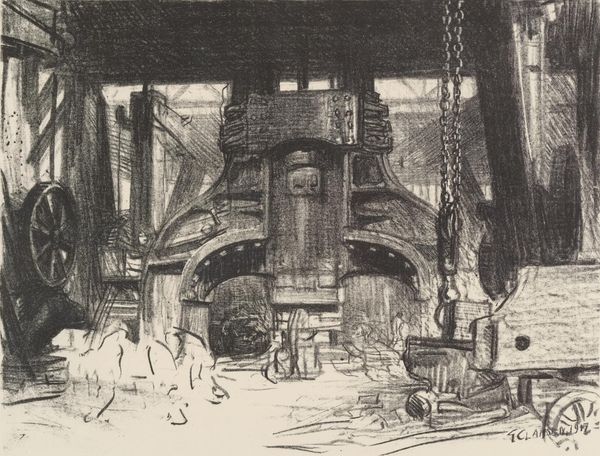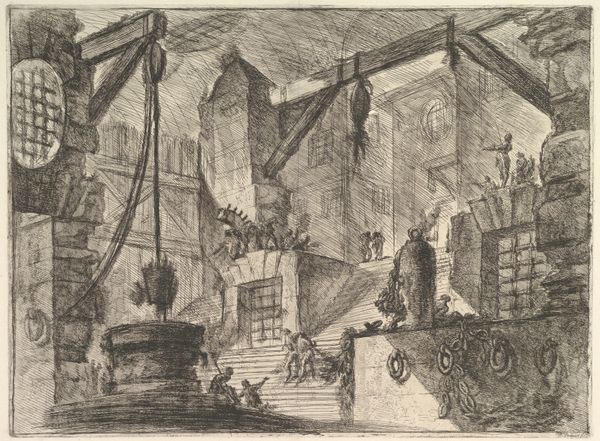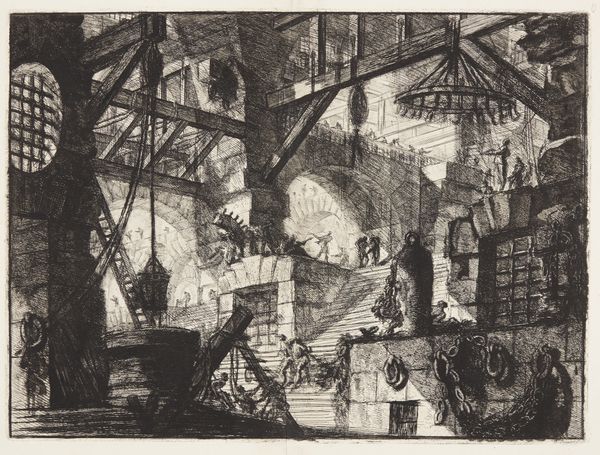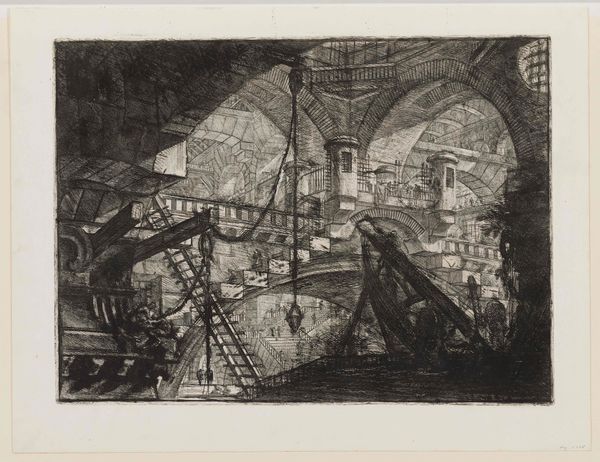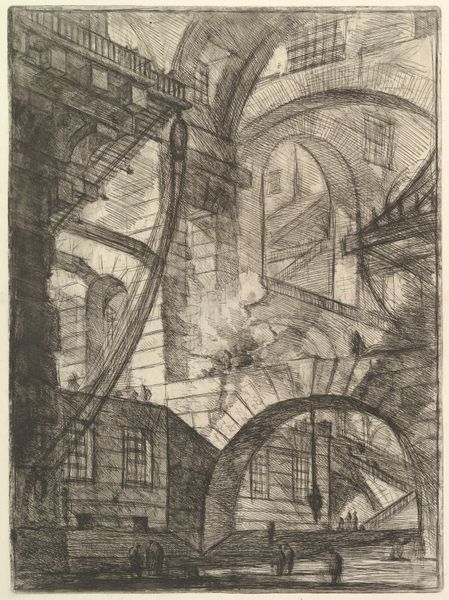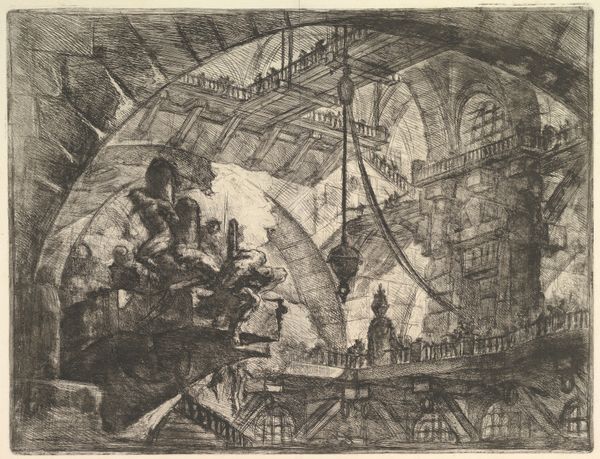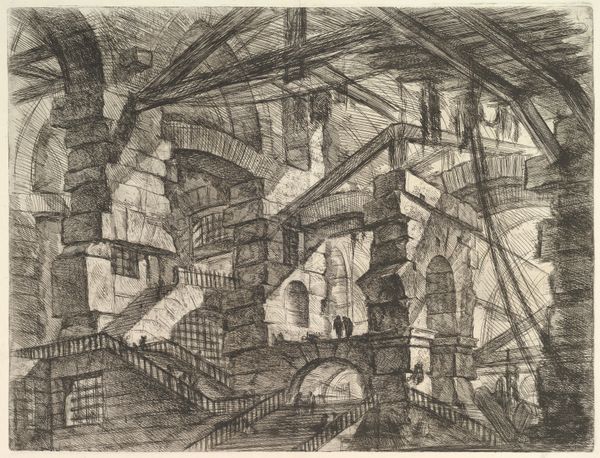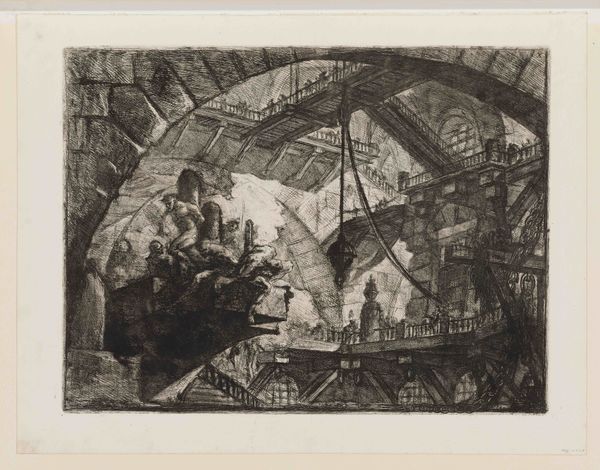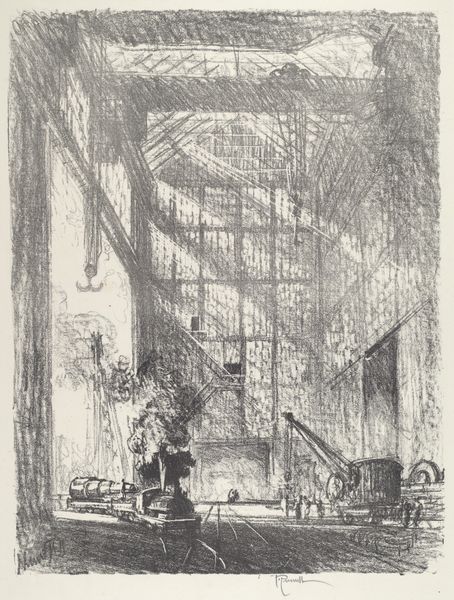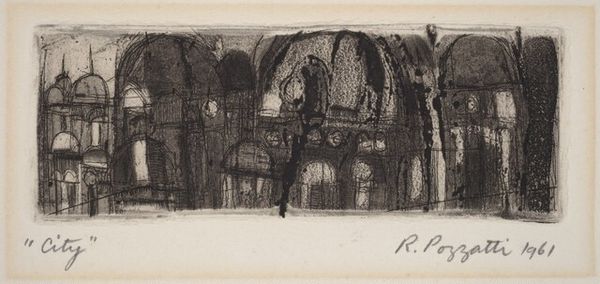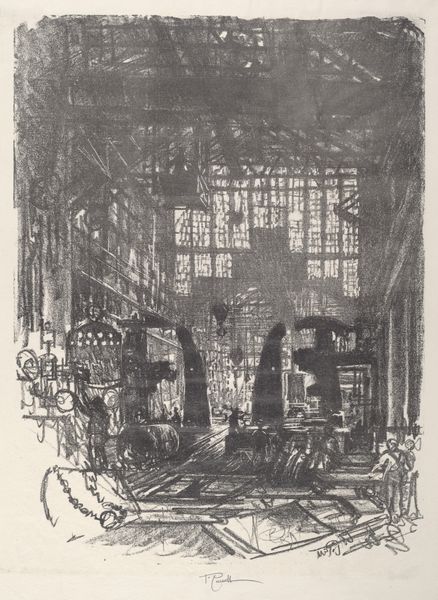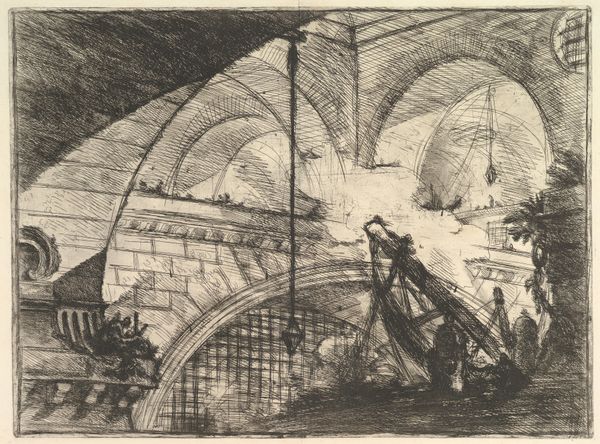
The Pier with Chains, from "Carceri d'invenzione" (Imaginary Prisons) 1744 - 1755
0:00
0:00
drawing, print, etching, architecture
#
drawing
#
baroque
# print
#
etching
#
human-figures
#
landscape
#
fantasy-art
#
line
#
architecture
Dimensions: Sheet: 19 1/2 x 25 3/16 in. (49.5 x 64 cm) Plate: 16 1/16 x 21 9/16 in. (40.8 x 54.8 cm)
Copyright: Public Domain
Editor: This is Giovanni Battista Piranesi's "The Pier with Chains, from 'Carceri d'invenzione' (Imaginary Prisons)," made between 1744 and 1755. It's an etching, and the architecture depicted is incredibly detailed and imposing. It evokes a feeling of… confinement, maybe even oppression. What stands out to you about this work? Curator: For me, this image foregrounds the intense labor involved in producing such a complex print. Consider the artist’s physical effort to create the plate, the precise, repetitive gestures required to etch those countless lines. But also consider the materials: the copper, the acid, the paper. Piranesi is making us aware of the sheer *stuff* of art. How does that material presence shape your understanding of "oppression?" Editor: I suppose I hadn’t thought about it in those terms. The image feels more like a phantasmagoric space, separate from the reality of labor. Curator: Precisely. And yet, by highlighting the materiality, the act of making visible, we are drawn to considering *how* that space is constructed. Look at the architecture - how do the weight of the arches, the scale of the piers, impact the human figures that become dwarfed? Piranesi subtly comments on power and control. Consider the context: prints like these were commodities, circulated and consumed by a growing European market. Isn't it interesting how fantasy becomes tied to commerce? Editor: I never really thought about fantasy art in terms of production and consumption before. So the labor and materials used to create this imagined prison are themselves embedded in systems of power. Curator: Exactly. The means by which something is created directly affect how that creation impacts the observer, influencing both personal perspective and greater, societal observations. Editor: So much to consider! I will never look at Piranesi the same way again. Thanks!
Comments
No comments
Be the first to comment and join the conversation on the ultimate creative platform.
